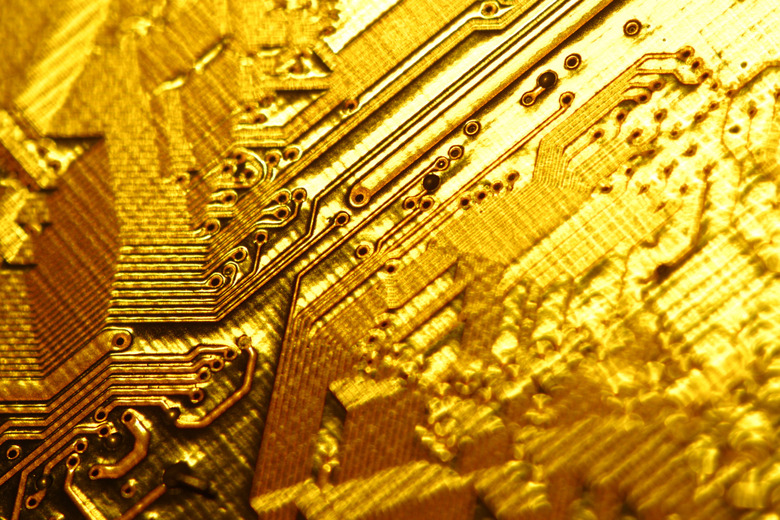How To Mount A Circuit Board In An Electronic Project Box
Printed circuit boards are sheets of fiberglass or other material embedded with electrical conductors. Conductive pads allow electrical components to be soldered in place. Circuit boards are found in nearly every electronic device, and are the predominant technology by which electrical circuits are assembled. While printed circuit boards are flexible, they can be damaged by mechanical shock or flexing. As a result, they require sturdy mounting to protect them from damage. The boards also contain uninsulated components on both sides, which means contact with a metal enclosure can cause electrical shorts and malfunctions.
Step 1
Locate the holes on your circuit board. Mass-produced circuit boards usually have 1/4-inch holes in each of the corners which can be used for mounting.
Step 2
Hold the circuit board directly over the location you wish to mount it, and mark the location of the screw holes on the enclosure.
Step 3
Mount the printed circuit board to the stand-off spacers. Place a 3/8-inch nylon washer over the top of the drilled hole, and insert a 1/2-inch screw through the hole. Secure the screw to one of the stand-offs. The thread on the screw should match the stand-offs. Repeat with the other screw holes.
Step 4
Drill 1/4-inch holes through the enclosure at the locations marked.
Step 5
Place the circuit board with the stand-offs mounted to it over the holes drilled into the enclosure. Place a 1/2-inch long screw into each hole and tighten, driving the screw into the bottom of the standoff. Repeat with the other screws.
Things Needed
- Stand-off spacers with screws
- Nylon washers
- Screwdriver
- Drill with 1/4-inch bit
- Epoxy or other adhesive (optional)
TL;DR (Too Long; Didn't Read)
Stand-off spacers which grip the edge of the printed circuit board are also available, eliminating the need for drilled holes. Stand-offs are also available with threaded studs, clips, or nylon fasteners in place of threads. Check with your electronics supplier or online catalog.
In place of screws, epoxy can be used to secure the stand-offs to either the circuit board or the enclosure.
References
Cite This Article
MLA
Hazleton, Andrew. "How To Mount A Circuit Board In An Electronic Project Box" sciencing.com, https://www.sciencing.com/mount-board-electronic-project-box-5783166/. 24 April 2017.
APA
Hazleton, Andrew. (2017, April 24). How To Mount A Circuit Board In An Electronic Project Box. sciencing.com. Retrieved from https://www.sciencing.com/mount-board-electronic-project-box-5783166/
Chicago
Hazleton, Andrew. How To Mount A Circuit Board In An Electronic Project Box last modified March 24, 2022. https://www.sciencing.com/mount-board-electronic-project-box-5783166/
